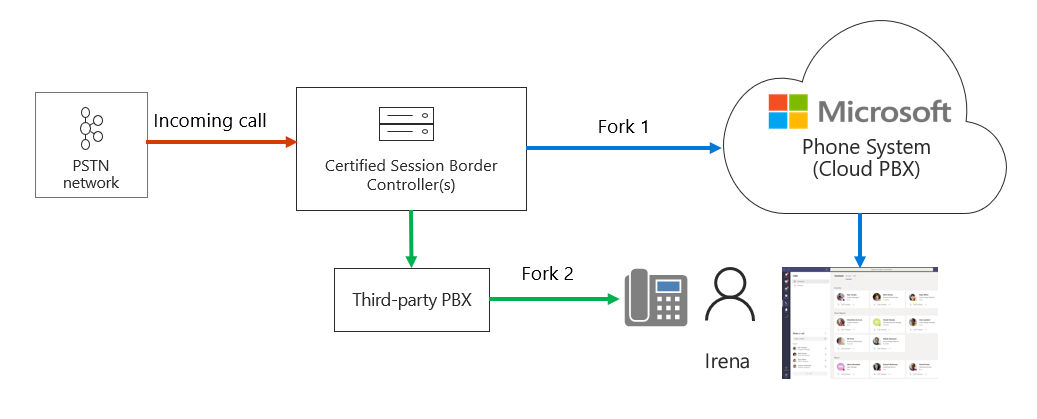Manage call notifications
This article describes how to manage call notifications for your Direct Routing users. You can configure call endpoints to both Teams and to a third-party Private Branch Exchange (PBX) or Session Border Controller (SBC). This setup is useful, for example, if you want to send a call to a user's mobile and desk phones at the same time.
In the following diagram, user Irena has two endpoints:
- A Teams endpoint
- A SIP phone connected to a third-party SBC
When a call arrives, the SBC forks the call between Direct Routing and the third-party SBC.

If the call is accepted on Fork 2 (by the third-party SBC), Teams generates a “Missed Call” notification.
You can prevent the “Missed Call” notification by configuring the SBC to send a Cancel on Fork 1 as follows:
REASON: SIP; cause=200;text”Call completed elsewhere”
The call isn't registered in the call detail records of Microsoft Teams Phone System as a successful call. The call is registered as an “Attempt” with Final SIP Code “487,” Final Microsoft subcode “540200,” and Final SIP Code Phrase “Call completed elsewhere.” (To view the call detail records, go to the Teams Admin center -> Analytics and Reports -> Usage Reports, and select PSTN Usage.)
The diagram below illustrates the SIP ladder for Fork 1, explains the call flow, and the expected REASON in the Cancel message.

Feedback
Coming soon: Throughout 2024 we will be phasing out GitHub Issues as the feedback mechanism for content and replacing it with a new feedback system. For more information see: https://aka.ms/ContentUserFeedback.
Submit and view feedback for